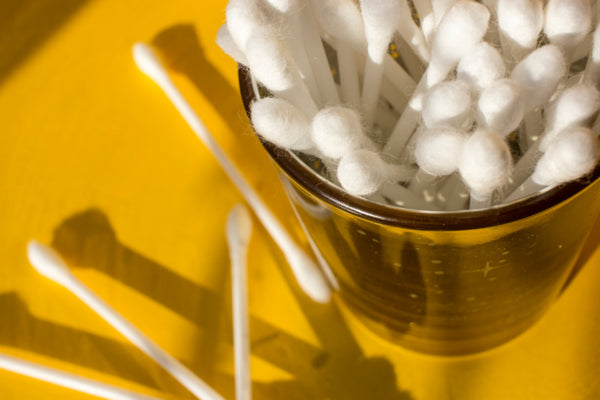
Sometimes a little reminder of how to look after our hearing aids is useful. We have selected a few hints and suggestions to help you enjoy your hearing aids with ease.
Putting on and removing your hearing aids
Whilst sometimes it can be fiddly, it’s important that we learn the correct way to safely put on and take off our hearing aids to prevent damage and ensure the lifespan of our aids.
During your hearing aid fitting appointment, your audiologist will demonstrate the best way to put on your hearing aids so they sit comfortably inside or behind the ear, depending on the style and model of the aid. They will then demonstrate how to take off the aids, and how to store them when they are not in use - in most instances this is in a case or charging dock.
Want to know more? - Here’s a useful video from Oticon demonstrating how to correctly put on and remove a RITE hearing aid.

Changing your hearing aids batteries
Depending on the type of hearing aid you have, you may be required to change its battery. The frequency will depend on the type and size of the aid, typically larger hearing aids have a longer battery life.
- When it’s time to change the battery, you may hear two beeps. This will repeat at various intervals until the battery runs out.
- To change the battery you must first fully open the battery drawer and remove the battery. The location of the drawer will depend on the type of hearing aid you have. For in-the-ear aids, this will be found on the exposed part of the aid and lifted upwards. For behind-the-ear hearing aids, you can find the battery drawer on the body of the aid, typically on the edge that sits on your ear.
- Remove the new battery from the blister pack and any packaging that might be on the battery.
- Place the new battery into the battery drawer, making sure you match the ‘+’ symbol on the battery to the corresponding side of the drawer.
- You can then close the drawer, making sure it is clipped in place. Most hearing aids will play a small tune to inform you that the new battery is working, to check this hold the aid up to your ear.
Rechargeable hearing aids
If your hearing aid doesn’t have a removable battery then it will be a rechargeable aid. These will come with their own charging dock. Your audiologist will demonstrate how these work during your fitting appointment and will be able to answer any questions you may have at the time.
Typically a rechargeable hearing aid battery will last between 18-24 hours on a full charge, this will depend on a number of different factors including streaming, level of loss and the age of your battery. We recommend that you charge your hearing aids every night, making sure that the aids are correctly placed within the dock.
For more information on rechargeable Oticon hearing aids, please see below.
For information about other manufacturers please speak to your audiologist.

Cleaning your hearing aids
We recommend regular cleaning of your hearing aids to maintain their performance and prevent any damage. It is however important that you clean your aids in the right way. When you purchase your hearing aid, you’ll receive a cleaning kit which your audiologist will talk you through.
If you have behind-the-ear hearing aids, clean the surface of your hearing aid with an alcohol-free wet wipe. This is because they are coated with a hydrophobic coating that is sensitive to alcohol.
For in-the-ear hearing aids, all kinds of wet wipes can be used to clean them. You can also use a mild soap solution on a cotton cloth to wipe the surface. Make sure you leave your cleaned hearing aids to dry for one hour before putting them in and avoid using excess water that can enter and damage the hearing aids.
Changing the domes
For receiver-in-the-canal and behind-the-ear hearing aids, unless custom moulded, will need the domes changed every one to two months. This is an easy process that your audiologist will demonstrate at your fitting appointment should you need to know.
- To remove your old dome, hold onto the thin tube and gently pull the dome off.
- Remove your new dome from any packaging and align the tube to the centre of the piece.
- Push the dome firmly to ensure it is securely attached.

How to change a wax filter
Excess ear wax can clog up your hearing aids, and it is one of the main causes of problems that can occur in hearing aids.
To keep your hearing aids clear of wax you should use a wax protection system daily to remove any excess wax. The method used to change the filter will depend on the style and manufacturer of the hearing aid.
For Oticon hearing aids click the button below. For other aids speak to your audiologist.
If you have any questions or issues with your hearing aid, please don’t hesitate to contact us. You can call our team on 0800 40 20 20 or book a hearing aid review online.








